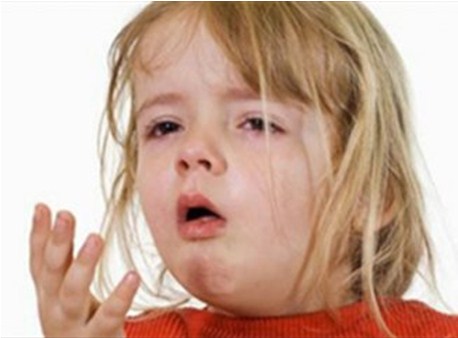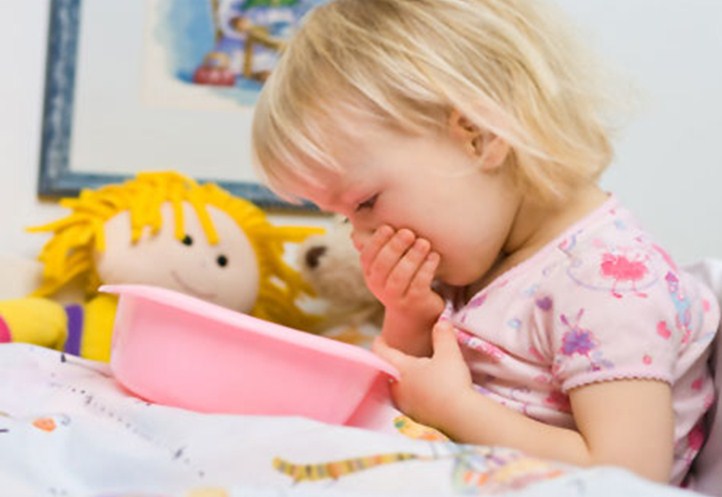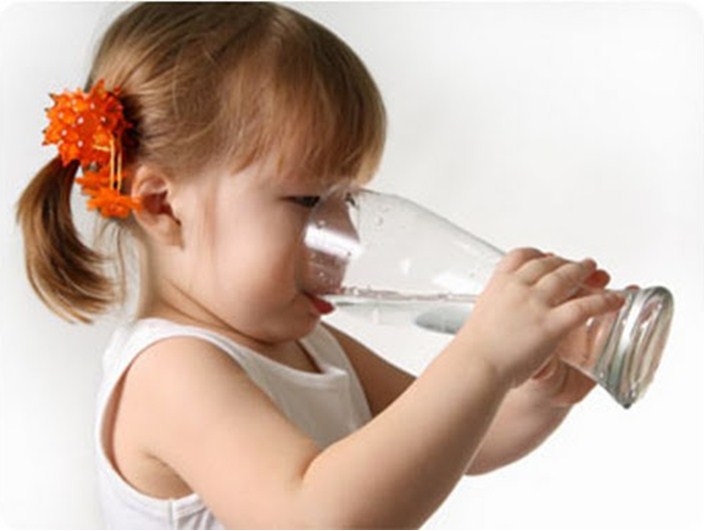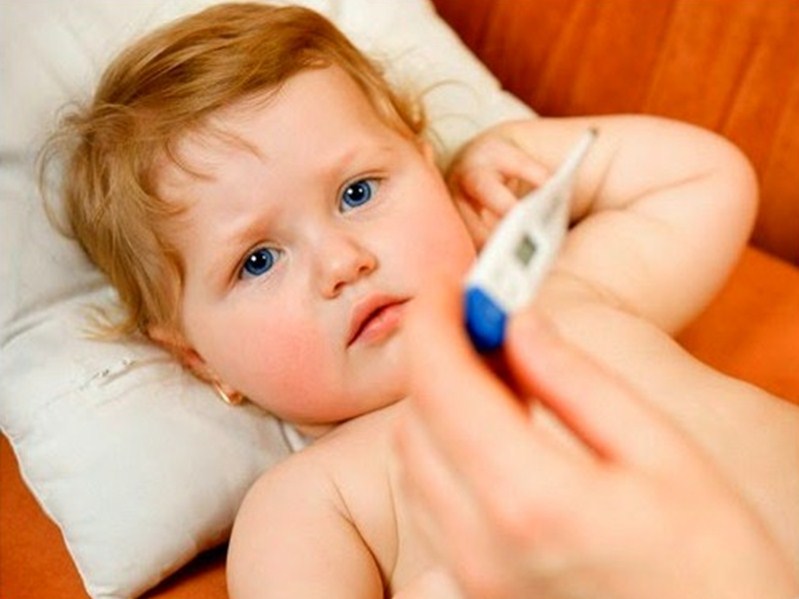When a child is sick and vomits: causes and treatment
Nausea in a child is one of the signs of malaise, which causes significant discomfort to the baby and serious concerns to parents. If the child is sick, then the cause of this condition should be immediately established, tk. this symptom may indicate the development of a serious illness.
In some cases, the appearance of nausea is not worth serious worries. This symptom can be caused by active games, accompanied by excessive mobility, profuse sweating. Especially if the child has eaten well before. Given that, the appearance of nausea in this case is understandable. By the way, excessive overeating can also cause nausea.
Nausea can appear on the background of stress and nervous experiences. Especially with a sharp change in the situation, for example, entering a kindergarten, school, etc. Experience and excitement are an integral part of life, not every adult is able to cope with them, but what can we say about a child. Sometimes, against the background of stress, nausea is accompanied by the fact that the child has a headache. As a rule, these symptoms disappear on their own, as soon as the baby gets used to the new conditions.
If the child is sick in the car, then this may indicate a weak vestibular apparatus. The condition can escalate to the point of vomiting if the vehicle is accompanied by a stuffy atmosphere, a strong smell of fuel and high speed driving.
When Should You Be Worried?

The following symptoms should be cause for concern:
- The child is constantly sick, the symptom does not disappear for a long time, its intensity does not decrease.
- There are accompanying symptoms: dizziness, nausea and diarrhea, nausea and vomiting, nausea and fever, stomachache and nausea.
- Nausea in the morning.
Constant nausea
If a child is sick day and night, then this condition indicates the course of a pathological process in the body: gastrointestinal disorders (starting with poisoning, ending with inflammation, pathological formations in the digestive organs), migraine (chronic headache), meningitis (inflammation of the meninges), hypothyroidism ( lack of thyroid hormones) and much more.
From the above, it should be concluded that if the child often feels sick, while there is no vomiting, diarrhea, or temperature, then this condition still requires emergency qualified medical care, because. may indicate a number of dangerous pathological conditions.
Associated symptoms
 If a child has pain in the intestines, fever, diarrhea, vomiting, then with a high probability this condition indicates poisoning, an intestinal infection. In this case, the child may feel sick after eating stale foods. In some cases, even products that have not expired can cause poisoning if their storage, production technology or transportation has been violated. As a rule, after 2-4 hours, signs of indigestion appear. First there is nausea, then vomiting, diarrhea and pain in the abdomen. In severe cases, all these symptoms are accompanied by fever.
If a child has pain in the intestines, fever, diarrhea, vomiting, then with a high probability this condition indicates poisoning, an intestinal infection. In this case, the child may feel sick after eating stale foods. In some cases, even products that have not expired can cause poisoning if their storage, production technology or transportation has been violated. As a rule, after 2-4 hours, signs of indigestion appear. First there is nausea, then vomiting, diarrhea and pain in the abdomen. In severe cases, all these symptoms are accompanied by fever.
Intestinal infections can be bacterial or viral. Tablets for abdominal pain and means to improve digestion are prescribed based on the nature of the pathogen. Quite often, intestinal infections are accompanied by chills, pallor, lethargy, dryness of the mucous membranes of the skin, which indicate dehydration.
Infection occurs when a pathogenic bacterium or virus enters the body (in the gastrointestinal tract) of the baby. This can happen in various ways:
- Due to non-compliance with hygiene standards. If a child has touched hands with contaminated products, objects, animals, plants, etc., and has not washed his hands after that, then pathogenic microorganisms enter the body through food, saliva (when licking fingers). At the same time, you can also get infected from a sick person: through a kiss or eating a product together.
- through poor quality water. In regions with poor water quality, this is a fairly common problem. Pathogenic microorganisms can enter the body after the child simply drinks water, so it is recommended to boil it before drinking.
As a rule, the disease develops rapidly and poses a threat to health.
Nauseous in the morning

IMPORTANT! The appearance of nausea may indicate the development of serious pathologies, in order to identify them in a timely manner or exclude their presence, it is necessary to consult a doctor.
If nausea is not accompanied by acute symptoms and the pediatrician confirms the absence of threatening pathologies, then you can reduce the manifestation of nausea yourself at home.

First of all, it is recommended to remove all kinds of products, objects with a pungent odor away from the child. Access to fresh air must be provided. If the symptom is caused by anxiety and fear, then the child is advised to breathe deeply. Clothing should not interfere with this. Parents should try to distract the baby by reading a book or watching cartoons.
It is important that the child does not lie down, because. in this position, gastric juice can rise to the esophagus and increase discomfort, a feeling of nausea. The latter can be a symptom of dehydration, so fractional drinking is recommended. If nausea is caused by a stoppage of the stomach (which often occurs with overeating, eating excessively fatty foods, which, given the size of the child’s stomach and how much food is digested, cannot go unnoticed), then acidic drinks or fruits will help stimulate his work. This will help:
- lemon, tea with lemon, lemonade;
- oranges;
- kefir, etc.
Carbonated drinks in this case can cause belching and bloating. Therefore, if there is nothing suitable nearby, it is better to wait until gases come out of the water.
What to do in case of a health threatening condition?
Nausea, vomiting, diarrhea and fever are a reason not to self-medicate, but to see a doctor. While the parents are waiting for the arrival of qualified medical staff, the baby should be given first aid.
Nausea and vomiting
If nausea is accompanied by vomiting, then the baby should be in such a position that he does not choke on vomit (which is especially dangerous for a baby or a one-year-old child due to the imperfection of the digestive system). To do this, the baby is recommended to give a semi-recumbent position on its side.
Sometimes nausea is caused by eating low-quality foods.

In this case, it is necessary to induce vomiting and gastric lavage to reduce the concentration of toxins in the body. In children under 6 years of age, you should not induce vomiting on your own, because. there is a risk of re-swallowing vomit. It is also recommended to give the child sorbents that promote the absorption of toxins and the destruction of pathogenic microflora:
- Activated carbon.
- White coal.
- Enterosgel.
At the same time, dehydration of the body should not be allowed, therefore it is recommended to give the child a little mineral water.
If vomiting is accompanied by painful stomach cramps and bile secretion (this is usually observed after frequent vomiting, vomit is practically absent), then it is time to give the baby an antiemetic drug:
- Yunorm;
- No-Spasm;
- Motilium.
Medicines stop the gag reflex, reduce the feeling of nausea and alleviate the general condition of the child. The dosage should be prescribed by the doctor, taking into account the age of the baby.
Nausea and fever

These 2 symptoms may indicate a bacterial or viral infection in the body (for example, tonsillitis, flu, etc.), poisoning, an intestinal infection, and much more. Before the doctor arrives, it is recommended to alleviate the baby's condition with an antipyretic drug.
It is important that the dosage form of the drug is chosen correctly. There are suppositories, syrups, tablets, solutions for injections.
- if the child has diarrhea, then the use of antipyretic suppositories should be abandoned;
- with the urge to vomit, it is better not to use tablets or syrup.
Solutions for injections are a rather painful way of administering a medicine for a child, but if the use of other dosage forms is not possible, then this option remains the only and at the same time the fastest acting. In the absence of medical education or skills in performing intramuscular injections, it is necessary to entrust the manipulation to the medical staff.
The most popular antipyretics for children are:
- Based on paracetamol (Panadol, Paracetamol, Cefecon D, Kalpol, etc.). Medicines provide an effective antipyretic and, to a lesser extent, analgesic effect, they act after 30-50 minutes. They have minimal toxicity.
- Based on ibuprofen (Nurofen, Ibuprofen, Ibufen). Medicines belong to NVPS, provide anti-inflammatory, antipyretic, analgesic effects.
- Based on nimesulide (Nise, Nimulide). Medicines belong to NSAIDs, the action is similar to Ibuprofen. They act faster and longer than Paracetamol, but are more toxic.
Nausea and abdominal pain

Reduce, heaviness, bloating, belching will help means to improve digestion -. Enzymes are a kind of biological catalysts, they speed up the course of chemical reactions in the digestive tract.
They have a wide range of applications and are suitable for nutritional errors, gallbladder pathologies (for example, cholecystitis); diseases of the stomach, in which the secretory function of the organ is reduced; intestinal diseases (for example, enteritis, enterocolitis); pathologies of the pancreas, etc.
For children, drugs coated with a special shell are suitable. This contributes to protection against hydrochloric acid of gastric juice (without a coating, the effectiveness of the drug may be reduced). In addition, such a coating eliminates the contact of the oral mucosa with the unpleasant active substance of the drug.
Nausea caused by worms
Tablets that improve digestion

To alleviate the condition, doctors prescribe the following pills for abdominal pain, nausea, and other unpleasant symptoms:
- Mezim. The drug stimulates the process of digestion of food, compensates for the lack of pancreatic enzymes, and helps to quickly get rid of abdominal pain.
- Pangrol. The drug is a reliable assistant to the pancreas. It is widely used for digestive disorders caused by pathologies in any part of the digestive tract. It helps to eliminate intense pain in the abdomen, dyspeptic symptoms (excessive flatulence, seething in the intestines, stool disorders).
- Creon. The drug improves the breakdown of fats, proteins, carbohydrates, which contributes to their complete absorption. It normalizes the microflora in the intestines, prevents excessive formation of gases, helps the body adapt to the effects of external aggressive factors.
- Ermital. The drug helps to eliminate food digestion disorders, enzyme deficiency, improves the process of food digestion, due to the increased breakdown of nutrients into simple components, provides a mild analgesic effect if the stomach hurts.
IMPORTANT! If nausea is accompanied by pain, vomiting, diarrhea, fever, and other alarming symptoms, then you should not risk the health of the child. In this case, you should immediately call a doctor or an ambulance.

Anton Palaznikov
Gastroenterologist, therapist
Work experience more than 7 years.
Professional skills: diagnosis and treatment of diseases of the gastrointestinal tract and biliary system.
pediatric surgeon dentist






